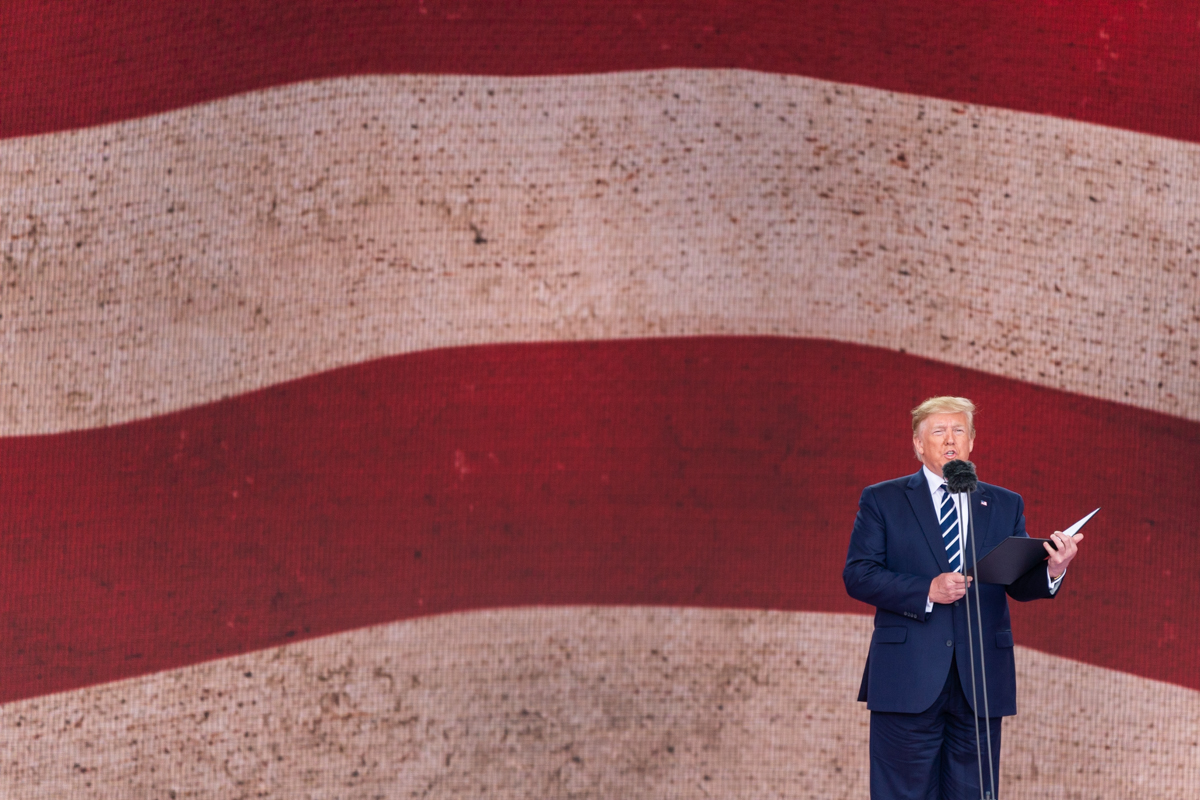Water Wars: Looming Arbitration Decision Tests Regional Partnerships
Internal Divisions Land ASEAN in Troubled Waters

Ch
Published by The Lawfare Institute
in Cooperation With

Internal Divisions Land ASEAN in Troubled Waters

China embarked on a sustained charm offensive this week to rally countries around its interests in the South China Sea. On Sunday, PRC Foreign Minister Wang Yi announced a “four point consensus” with Brunei, Cambodia, and Laos on disputes in the South China Sea. Minister Yi said that they agreed that states have the right to choose “their own ways to solve disputes” under international law without having an agenda unilaterally imposed on them. His statement also called on states outside the region to “play a constructive role” in resolving disputes.
Minister Yi’s announcement came after a whirlwind of meetings he held in Brunei, Cambodia, and Laos. In Brunei, Minister Yi reiterated his call for a “dual-track approach” to South China Sea disputes. In this approach, ASEAN and China together maintain regional stability without the intervention of states not directly involved in the disputes. In case that was not sufficiently clear, he warned that a “certain nation outside the region” risked undermining the interests of ASEAN countries. While in Cambodia, Minister Yi praised Phnom Phenh for “promoting peaceful conflict resolution.”
Other countries in the region swiftly reacted. ASEAN Secretary-General Le Luong Minh reminded reporters that, “an ASEAN country cannot negotiate with China on disputes that involve also other ASEAN countries.” Vietnamese Defense Minister Ngo Xuan Lich also said that ASEAN countries need to have a unified voice when discussing disputes in the South China Sea. Singaporean Ambassador-at-Large Ong Keng Yong criticized China’s move as “meddling” in ASEAN’s internal affairs. Cambodian government spokesperson Phay Siphan downplayed talk of a rift within ASEAN, insisting that, “there’s been no agreement or discussions, just a visit by a Chinese foreign minister.” Chinese Vice-Minister Liu Zhenmin also protested that, “China has always supported the development of ASEAN.”
In other news...
China
A report from The Global Times announced plans to deploy mobile nuclear power stations around construction sites in the South China Sea. Chinese naval expert Li Jie asserted that the power stations are needed “given the long distance between the Nansha [Spratly] Islands and the Chinese mainland.” Other reports suggest that the government will order twenty nuclear power platforms, the first of which will be deployed in 2019. Surprisingly, Foreign Ministry Spokesperson Hua Chunying said that she had “not heard about” the Global Times report.
Building on reports two weeks ago, the South China Morning Post confirmed China’s plans to start construction on Scarborough Shoal within the year. A source from the PLA Navy said that building an airstrip on the feature would “further perfect” the country’s ability to project air power in the South China Sea. At the same time, Philippine media noted that local fishermen encountered five Chinese Coast Guard vessels patrolling Scarborough Shoal. Philippine Department of National Defense Spokesperson Peter Galvez could not confirm these reports, but did say that five Chinese coast guard vessels would be “more than the usual.” Elsewhere in the region, Chinese media reported that the PLA Navy’s South China Sea Fleet conducted landing drills to simulate recapturing an island.
Yesterday, President Xi reiterated that China “remain[ed] committed to resolving disputes peacefully through friendly consultation and negotiation with countries directly concerned” with South China Sea disputes. Simultaneously, State Oceanic Administration Deputy Director Chen Yue announced that Beijing is developing a five-year plan for resolving South China Sea disputes by engaging with ASEAN member states.
Finally, PRC Vice Foreign Minister Liu Zhenmin met with South Korean Second Vice Minister of Foreign Affairs Cho Tae-yul to negotiate delimitation of their overlapping EEZs in the East China Sea. Minister Cho reported that the discussions were “amicable.”
United States
Following on joint exercises in the Philippines that ended last week, four A-10C Thunderbolt II fighter jets flew near Scarborough Shoal to assert freedom of navigation and overflight. A statement from Pacific Air Command said that the mission was designed to provide “air and maritime situational awareness.” Col. Larry Card announced that “this first iteration of the Air Contingent mission [will] last for the next several weeks.” PRC Foreign Ministry Spokesperson Hua Chunying argued that “there is something unnatural with the high-profile hyping of such a flight, and the reason why they did this is questionable.”
China’s ire was further aroused after the Department of Defense released a summary of excessive maritime claims challenged by American FONOPs in fiscal year 2015. The US conducted FONOPs against thirteen polities, including China, Vietnam, Taiwan, the Philippines, Malaysia, and Indonesia. The Chinese Defense Ministry claimed that FONOPs “threaten[] coastal nations’ sovereignty and security and destroys regional peace and stability.” The US military, however, shows no sign of scaling back its engagement in the region. Pacific Fleet Commander Admiral Scott Swift, for example, announced plans to increase the Third Fleet’s role in the Asia-Pacific. All in all, tensions are likely to remain high up through the 8th Strategic and Economic Dialogue scheduled for early June.
On the home front, legislators continued to urge greater action from the Obama administration. Senator Cory Gardner argued that FONOPs once every three months are “insufficient to send a strong message to China.” Senators Robert Menendez and Bob Corker also advocated for tougher US action. The Senate Foreign Relations Committee also considered a bill “to promote stability and security in the Asia-Pacific maritime domains.” The bill appropriates money for maritime capacity building amongst Southeast Asian partners and mandates reports on FONOPs and partnerships in the South China Sea.
Japan
Japanese Foreign Minister Fumio Kishida will meet with Chinese Foreign Minister Wang Yi in Beijing on April 30th for a much-awaited bilateral summit that will focus on disputes in the East and South China Seas. Ministers Kishida is also expected to propose a bilateral ministerial-level economic dialogue and trilateral foreign ministers’ meeting with South Korea. While in Beijing, Minister Kishida has also asked for a meeting with PRC Premier Li Keqiang. Foreign Ministers from China and Japan have not met since November 2009.
In advance of the meeting, Minister Kishida hoped “to establish a Japan-China relationship that is appropriate for the new era.” He also noted that, “states of the Asia-Pacific region and the international community are very worried about (China’s) fast-paced and opaque increase in military spending and unilateral actions to change the status quo.” Responding to Minister Kishida’s comments, PRC Foreign Ministry Spokesperson Hua Chunying regretted that “Japan is still making some improper remarks against China.”
Finally, the Defense Ministry scrambled fighter jets against Chinese planes between January and March twice as many times as was necessary during the same period last year. Self-Defense Forces Joint Staff Public Affairs chief Kazuhiko Fukuda said that these statistics “indicate[] a tougher security environment.” Last year was already a record-setting year for scrambling Japanese fighter jets against Chinese aircraft. Chinese incursions also continued this past week as the Japanese Coast Guard reported three additional Chinese Coast Guard vessels near the Senkaku/Diaoyu Islands.
Taiwan
Tokyo seized and detained the crew of a Taiwanese fishing vessel operating 160 nautical miles off of Japanese-controlled atoll in the East China Sea. Family members of the crew paid nearly $53,000 USD as a “security deposit” to release the boat and crew. The Taiwanese Foreign Ministry condemned Tokyo’s actions as “highly unacceptable” and “pirate-like.” Reacting to the event in Beijing, Taiwan Affairs Office Spokesperson An Fengshan said that, “it is the duty of the two sides of the Taiwan strait to protect the legal rights and benefits of fishermen.” A senior official in Taiwan’s incoming Democratic Progressive Party (DPP), however, said that Taipei would not align with Beijing.
Australia
After weeks of intense speculation, Prime Minister Malcolm Turnbull announced that a French offer to build 12 submarines beat out competing offers from Japan and Germany. Japanese Minister of Defense General Nakatani said that the decision “was deeply regrettable” and that his ministry would “ask Australia why they didn’t pick our design.” The loss was acutely felt for Japan, which had positioned the bid as a step towards stronger bilateral relations in light of Chinese actions in the South China Sea.
Indonesia
Jakarta detained another Chinese trawler this week that was again said to be operating illegally in Indonesian waters. The trawler had previously evaded Argentine maritime enforcement officials in February. Notwithstanding this snafu, Chief Security Minister Luhut Pandjaitan and Chinese State Councilor Yang Jiechi pledged to increase security ties, marine cooperation, and investment during Minister Pandjaitan’s recent visit to Beijing.
Philippines
For the second time this month, a Japanese destroyer docked in Subic Bay as part of a navigational training mission meant to “deepen [Japan’s] relationship with the Philippines.” Five A-10C Thunderbolt 2 American fighter jets, three HH-60G Pave Hawk helicopters, and over 200 airmen have also deployed to Clark Air Force Base.
Malaysia
After weeks of radio silence, Marine Department Director-General Baharin Abdul Hamid proposed building a radar station in the South China Sea to increase maritime security and detect suspicious ships in national waters.
Analysis, Commentary, and Additional Information
Following on Canberra’s decision to purchase submarines from France, all eyes have turned to Australia’s next moves in the South China Sea. James O’Neill in New Eastern Outlook writes a biting critique of the country’s more aggressive posture while Tomohiko Stake at East Asian Forum ponders how Japan and Australia might best cooperate to enhance regional security. Follow The Conversation for a critical look at Australia’s strategic options.
A similarly robust flood of analysis followed the four-country consensus that shook ASEAN. Kor Kian Beng at The Straits Times shows how China is leveraging its diplomatic machinery to shape international opinion in advance of an arbitration decision. Prashanth Parameswaran at The Diplomat further contextualizes the four-country consensus within the history of ASEAN’s South China Sea diplomacy. Ernest Bower at ASEAN Strategic shows how Japan, the US, and Australia have tried to influence ASEAN and Caitlin McCaffrie at New Mandala contemplates how Laos will fare at the helm of ASEAN this year.
On the American side, reams of (digital) paper were spent thinking about strategies to counter Chinese action in Scarborough Shoal. Jay Batongbacal at AMTI argues that the US should draw a red line at Scarborough Shoal. Lawfare’s own Julian Ku agrees that Scarborough Shoal is important while also clarifying the limits of America’s legal commitments to the Philippines under the Mutual Defense Treaty. Lastly, John Richard Cookson at The National Interest takes a broader, critical perspective by arguing that the bevy of analysts who have called for stronger US action fundamentally misunderstand President Xi and the current state of Chinese domestic politics.
The Sydney Morning Herald published a particularly enlightening interview with Dr. Shi Yinhong on the lengths to which China will go to protect its interests in the South China Sea. Dr. Shi is an influential counselor to China’s highest executive state body (the State Council). For a refresher on the historical basis of China’s claims to sovereignty and jurisdiction in the South China Sea, our friends at Xinhua, as always, have you covered.
Lastly, two articles discuss the Philippines/China arbitration. First, Evan Garcia at The Straits Times presents the Philippine case for those of us who need a refresher on their 1,000-page memorial. Second, Prof. James Kraska at The Maritime Awareness Project contemplates likely outcomes for the arbitration and what these outcomes might portend legally, politically, and strategically.
More Articles
-

Inside Trump’s Second-Term National Security Strategy
President Trump’s new “America First” National Security Strategy (NSS) is a stark departure from previous strategies. -

Why Gaza’s Aid Effort Will Fail Without Cash
Israel’s economic warfare and the hidden monetary and financial roots of Palestine’s humanitarian crisis. -

Lawfare Daily: Scott Anderson on How Social Media Platforms Should Handle Unrecognized Regimes
How should social media platforms handle unrecognized regimes like the Taliban?





